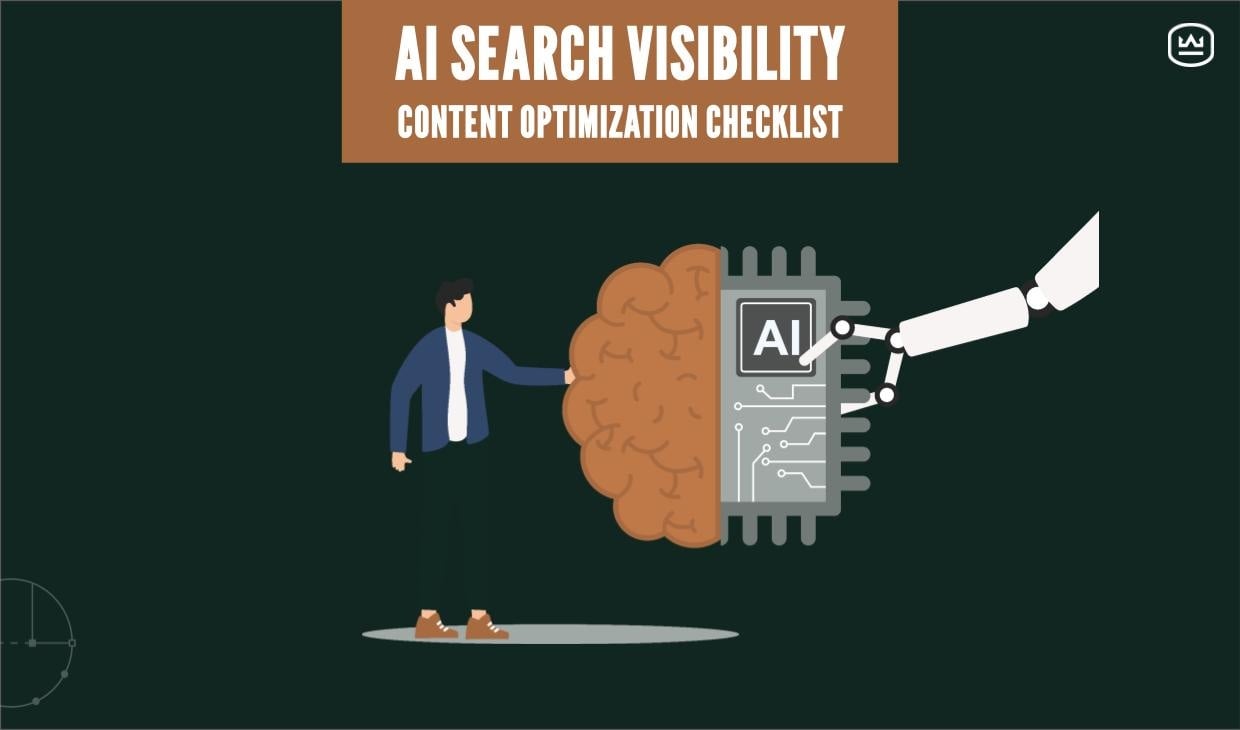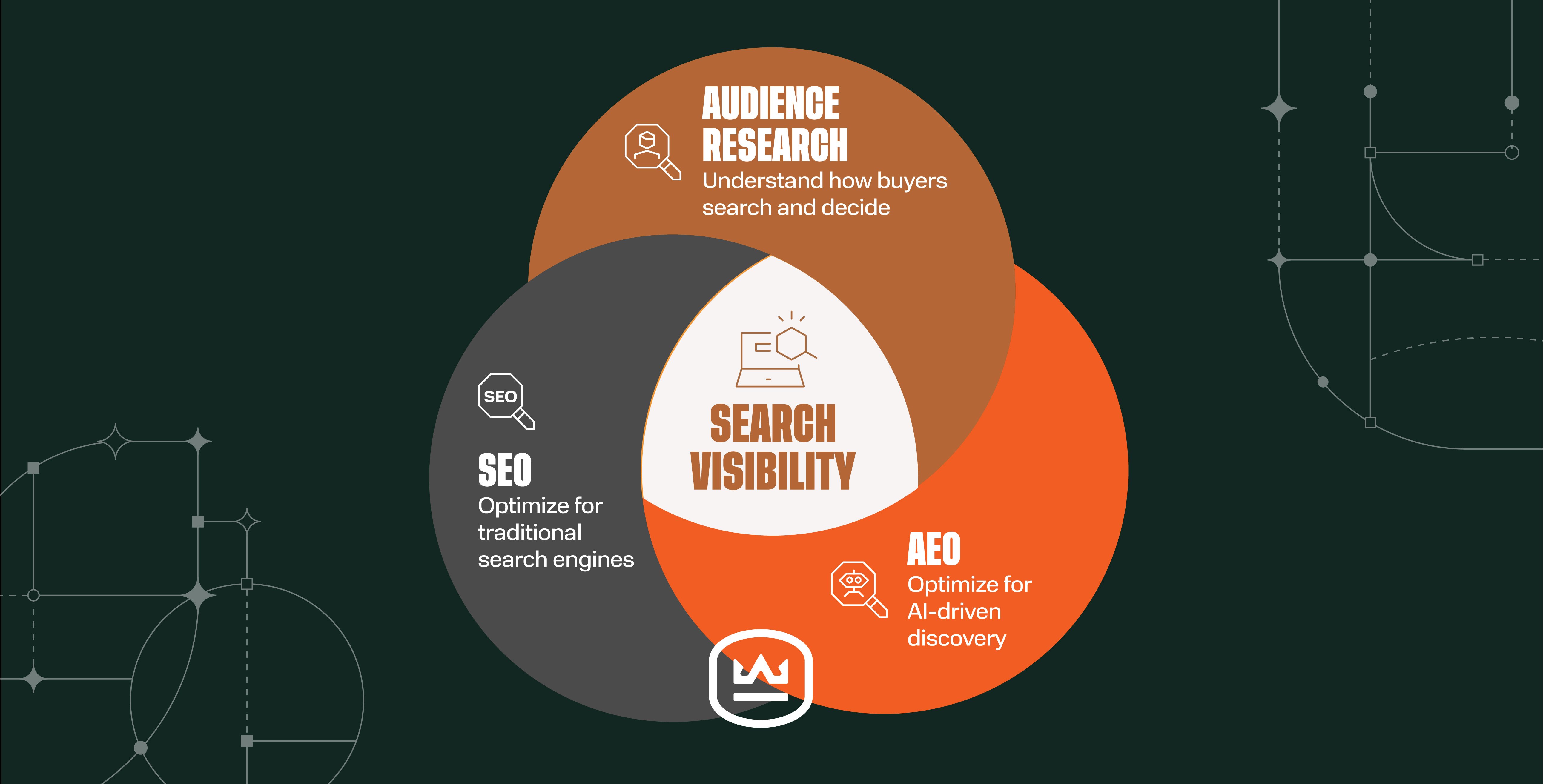How to Integrate SEO, UX, Design & Dev Best Practices in a Website Build
Written by
It’s been decades since websites became a business necessity — and today, merely having an online presence is not enough. To support business growth in a demanding, evolving landscape, your website needs to achieve multiple (sometimes conflicting) objectives, all of which are moving targets:
- It needs to be optimized for search
- It must deliver an exceptional user experience
- It has to appropriately leverage up-to-the-minute technical capabilities
Striking the right balance between these competing priorities can be tough. That’s why we convened a panel at Experience Inbound, offering attendees an opportunity to tap into our team’s insights on the topic. Here’s the lineup:
- Nicole Mertes — VP, Sales & Marketing
- Chelsea Drusch — Strategist & SEO Manager
- Dakota Perock — Creative Director, Design
- Jonathan Stanis — Web Strategist
Read on for the major points the team covers in the breakout session.
A Complex Web of Competing Website Priorities
Creating a high-performing website requires a deep understanding of the complex and intertwining relationships between search engine optimization (SEO), user experience (UX) design, and technical development. Each element plays a critical role in its own right, and also impacts the other disciplines:
Search engine optimization (SEO) lays a foundation for your website’s visibility and discoverability. It involves structuring your site, and optimizing content to rank well in search engine results pages (SERPs). Key considerations include:
- Keyword research (also its own complex discipline)
- Site architecture
- Demonstrating experience, expertise, authoritativeness, and trustworthiness (E-E-A-T)
UX design focuses on creating an intuitive, engaging, and frictionless experience for every visitor to your website. This encompasses everything from the overall layout and navigation to interactive elements, accessibility, and decisions about how to present content.
Effective UX keeps your audience’s needs and preferences top-of-mind.
Technical development provides the backbone that enables your SEO and UX strategies to come to life. It includes choosing the right content management system (CMS), ensuring fast page loads, implementing essential functionalities (and functionalities that improve on the essentials), and planning for future scalability.
Harmonizing these priorities is a complex undertaking that can often require tradeoffs and compromises.
How to Manage Competing Priorities: Real-Life Examples
The Weidert Group panelists are well-acquainted with the conflicting forces at work in every website project. In the panel discussion, they shared several illuminating examples of how they've navigated tradeoffs and compromises to harmonize the often competing demands of SEO, user experience, design, and technical development:
- Falcon Structures, manufacturers of customizable and scalable modified shipping containers, opted for unique URLs for each floor plan page, instead of dynamically populating content. The decision was made to prioritize SEO and rank for strategically selected keywords.
- On the other hand, Hayes Disc Brakes uses dynamically populated tertiary product pages. Here, the priority is efficient development and easier updates — letting go of the SEO potential of unique URLs, since ranking for specific brake part keywords isn’t the priority.
- Using repeatable page modules and design elements, while great for consistency and page load efficiency, can require design teams to scale back some creativity and uniqueness in order to work within technical constraints.
- Building a site with a modular approach can mean sacrificing uniquely designed pages in favor of a streamlined development process that leverages reusable components. On the other hand, modular design helps create a uniform experience that makes the user feel at home on every page.
These examples underscore our web team's core philosophy: put the specific business goals and target audience behaviors in the driver’s seat to determine which website priorities take precedence.
Our Insiders’ Website Checklist Can Help You Translate Insights into Action
If you’re interested in elevating your website but missed out on Experience Inbound this year, you can still benefit from the insights of our expert panel. Our team has developed a go-to reference checklist for your next website project. Unlike other web dev checklists, ours takes a strategic approach and offers expert guidance on how to anticipate and balance the demands of SEO, UX, and technical website development at every stage of the process.
Key areas it covers include:
- Planning and strategy — setting SEO benchmarks, conducting audience research, and prioritizing user-centric design principles
- Site architecture — creating an intuitive navigation structure, and optimizing for crawlability and indexing
- Content development — crafting engaging, keyword-optimized content that meets user needs and search engine requirements
- Design — ensuring website accessibility, responsiveness across devices, and fast-loading visual elements
This free resource condenses years of hard-earned wisdom into an easy-to-follow format, empowering you to make immediate improvements to your website. Click below to get your copy now, and you'll be well-equipped to make informed decisions that improve your site’s performance across the board.
Subscribe To Our Blog
Information. Insights. Ideas. Get notified every time a new Weidert Group blog article is published – subscribe now!
You May Also Like...

Search Engine Optimization
How Falcon Rebuilt Industrial AI Search Visibility in 2025

Search Engine Optimization
The New Search Visibility Checklist for AI-Era Content Marketing

Search Engine Optimization
SEO Isn’t Dead. It’s Evolving: How B2Bs Can Stay Visible in the Age of AI
Accelerate Your Growth with
Weidert Group
If you’re ready to explore a partnership, request a personalized consultation with our team.

